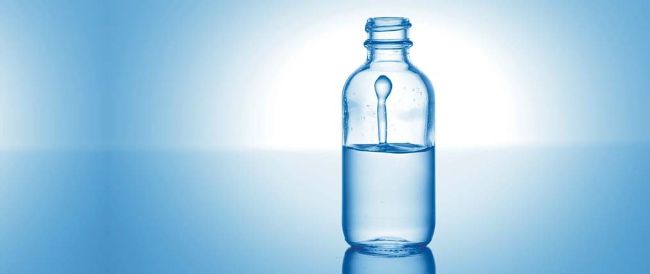Spotlight on... Hypochlorous Acid
Hypochlorous acid is said to be 100 times more powerful than bleach when it comes to fighting bacteria, while still being gentle on the skin. Kezia Parkins finds out everything you need to know about the trending ingredient
What is hypochlorous acid?
The buzz around hypochlorous acid (HOCl) hit new heights in the past few years, following its proven power as a disinfectant against Covid-19.
Popular formulas in the professional clinic and salon market include Clinisept and Hypo21.
HOCl is said to be 100 times more powerful than bleach when it comes to fighting bacteria. The hardcore cleaner, however, is also gaining hero status as a product for super-sensitive skin.
Hypochlorous acid is produced naturally by our own white blood cells to fight off bacteria and viruses.
“It’s literally part of us,” says Andrew Hansford, founder of ACH Aesthetics and ambassador for hypochlorous acid product Hypo21. “Hypochlorous acid is inside us in every single cell.”
HOCl attacks invading pathogens, breaking down the cell walls before destroying unhealthy invaders. This process is called phagocytosis, meaning that living cells engulf or ingest particles or infected cells.
“I always describe HOCI as like Pac-Man because of how it looks under a microscope,” adds Hansford. “It’s running around eating all the bacteria, and that happens inside us all the time.”
What are the different forms?
Hansford prefers to use HOCl in its purest form – a straight-up HOCl solution with nothing added. However, the ingredient is added to some skincare cleanser formulations due to its gentle yet effective cleansing properties. “This is thanks to its ability to cleanse the skin without causing irritation or disrupting the skin’s natural barrier,” says chemical engineer and Skin Masterclass founder Cigdem Kemal Yilmaz. “It’s also found in some moisturisers to maintain skin hydration while being suitable for use on sensitive and inflamed skin.”
Hansford warns that due to difficulties keeping HOCl fresh and stable, other ingredients are often used which are not so beneficial to the skin.
“Sometimes, hypochlorite is added into formulations,” he explains. “This makes it very stable and cheap to make, but hypochlorite is bleach.
“With HOCl in its purest form, the ingredient simply mimics what the body already has,” says Hansford.
“But when you’ve got a secondary ingredient like hypochlorite, then of course it can be a little bit more irritating at times.”

“ Whether you are doing a
MANICURE, WAXING OR MICRONEEDLING,
you have to make sure that when your client is leaving your clinic, they are
LEAVING BACTERIA-FREE ”
Andrew Hansford
How is it used in skincare?
“By its nature, hypochlorous acid is set to kill pathogens while being gentle on human cells, making it a safe option for numerous applications,” explains Yilmaz.
“It’s often used for wound care and as a disinfectant, thanks to its potent but gentle antimicrobial properties, and is additionally used to manage various inflammatory skin conditions such as atopic eczema and acne, for the same reasons.”
This electrolysed wonder-water is also considered a great ingredient for treating rosacea and dermatitis.
Hansford, who has achieved impressive results with HOCl on his patients, believes that within health and beauty, it should be used pre and post anything and everything.
“Whether you are doing a manicure, waxing or microneedling… you need to get that skin clean first,” he says. “It doesn’t matter what you’re doing with your client, you have to make sure that when they are leaving your clinic, they are leaving bacteria-free.”
He swears by Hypo21 – a pure HOCl created initially for pre- and postoperative care – and also recommends using the solution as aftercare for a wide range of treatments, from mesotherapy to piercing.
What can it be combined with?
HOCl is a super-flexible ingredient that often pairs well with moisturising agents, says Yilmaz. “Pair it with hyaluronic acid, glycerin and squalane, as well as anti-inflammatory ingredients such as allantoin and colloidal oatmeal,” she says.
“It also works amazingly with antioxidants such as vitamin Cand niacinamide and emollients such as shea butter, skin barrier enhancers like ceramides, and acne-management ingredients like salicylic acid and benzoyl peroxide by addressing both bacteria and inflammation.”